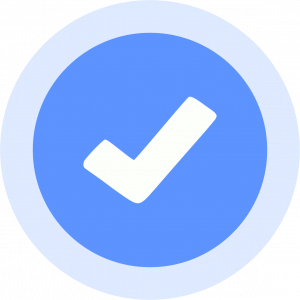Many businesses in the B2B arena may have initially ignored the benefits of having a Facebook Page altogether or may have set up a placeholder. There are circa. 60 million Facebook pages for businesses. This is truly dwarfed by Facebook’s almost 2 billion users. Facebook has performed something of a miracle as they’ve created the second most powerful advertising in the world where business is underrepresented. Facebook is a consumer-facing platform after all – where people come to interact with their friends and family in a non-professional manner. However, access to the second most powerful advertising platform in the world is too good an opportunity for B2B companies to ignore so here are our top tips for companies that have just set up their Facebook page:
Pick a suitable layout
Not all Facebook pages look the same – and for good reason. Some businesses, such as restaurants and cafes, might want to emphasis booking, chatting on Facebook Messenger or menus while other businesses – particularly in the B2B arena – might want to emphasise content as they have a strategy around building trust and qualifying leads through a content marketing or inbound strategy. Facebook allows you to change your page layout at any time (Settings > Edit Page > Template) so feel free to experiment but keep in mind the question “How do I want people to interact with my business?”.

Get your images & hours of business in order
Generally, populating your page with as much accurate information as possible and styling it up to reflect your brand is as good a starting point as any. There are plenty of blogs out there detailing the intricacies of nailing your Facebook cover out there (such as this one by Buffer) but ultimately there are just a few things to consider:
A Facebook cover used to be limited to a static photo. A cover can now be a photo, a photo carousel or a short video.
Facebook covers display at different aspect ratios on desktop and mobile. While there are technicalities we could discuss here, the basic gist is to keep text away from the edges of your cover.
Use high-quality imagery. Facebook limits the cover at 851 x 315 (there’s no point at looking at Facebook on your 4k TV yet), and while this represents a reasonably low pixel density on today’s smartphones, please don’t upload a small image, as Facebook will stretch it and it will look bad.
Also, add your business hours! Customers want to know when they can contact you.

Verify your page
Verified Facebook Pages receive a tick of verification and appear higher in search results. The verification process involves either receiving a robocall from Facebook to a phone number associated with your business or the upload of company formation documents or bills addressed to your company.
Verify your Page by going to be Settings > General > Page Verification
Select your Call to Action
The primary call-to-action on your Facebook page will most likely be the primary way people will interact with you on the platform. Contact Us, Book Now, Shop, Make A Donation, Message and Watch Video are all options, and all have potentially very different outcomes. Be sure to pick the right one for your page.
Invite to like
No one wants a page with no likes. By using Invite To Like, you can leverage the goodwill of your friends and family to support you and give your page a like. This feature is also pretty useful when you have Facebook content that gets shared more widely as you can ask people who like a post of yours to like the page.
You can invite to like from your page by scrolling down to the Community box.

Ask customers to review you
Reviews are great social proof when marketing. By asking your existing customer base to leave a review on your new Facebook page you can add some much-needed legitimacy to your Facebook presence. Avoid asking your employees or family members to leave unwarranted reviews. You’re not fooling anybody.
Set up your services or products
Showcase what you actually offer to the good people of Facebook. While Facebook’s e-commerce offerings have always been lacklustre, the ability to give your page visitors a quick idea of what it is you offer isn’t a bad thing.
Start posting content
Nosey people scroll. And they keep scrolling. Start fleshing out your Facebook presence by posting regularly even if the audience isn’t there yet. This means that visitors to your page can get a much more comprehensive view of your brand and its perspective.
Add Page Roles
Are you going to be the one person who manages your Facebook presence including advertising, posting and replying to messages? If not, you’ll need to enlist some help. Add staff members to your page by going to Settings > Page Roles. Remember that an Admin has the highest level of authority so don’t be handing out that title too often.
Set up an advertising account
This is the big one. Before you do this please be aware – the user interface for the Facebook Ads Manager is horrible and you will hate it. Even we struggle to use it.
Go to business.facebook.com > set up a business manager and set up an advertising account.
This is, unfortunately, a massive simplification of the process. Check out this more comprehensive guide from AdsEspresso.
We are not going to cover Facebook advertising strategies in this article but check out Facebook’s own creative tips for businesses and success stories to get an idea of how Facebook has benefitted businesses and how the advertising platform could benefit you.

Set up your Facebook Pixel + install it on your site
The Facebook Pixel is the key to advertising to audiences that have previously visited to your website. Once this pixel is in place you can begin generating remarketing audiences – Facebook will match the visitors to your website to their Facebook profiles (anonymously – no snooping) and you’ll be able to use Facebook’s advertising tools to target them. This can be pretty powerful as you can drive people from platforms where advertising is expensive, such as LinkedIn, to your website and then into your Facebook audiences, where advertising is generally more affordable.
Go to your Business Manager > go to Business Settings > go to Data Sources> go to Pixels and add a new one.
At that point, Facebook will give you a reasonably helpful guide to creating and implementing your pixel on your website. This pixel, a snippet of javascript which generates an extra cookie on your website, can be implemented in various ways depending on the platform. There are plugins, such as this one by AdsEspresso, which allow for a one-click implementation on a WordPress site. Other modern CMS, such as Squarespace, Bigcommerce and Shopify allow for one-click implementations natively. If your CMS is outdated, you may need to recruit a developer to help you manually implement the code.
Once your pixel is in place you can start generating remarketing audiences.
Go to Business Manager > Assets > Audiences > Create Audience > Custom Audience to get started.
Import your MailChimp list
If you’ve spent years building (GDPR compliant) email lists, then Facebook will allow you to match these details to their users too. Remember that segmentation – splitting your lists into buyers and prospects, for example, is an important way to get more value from Facebook Advertising. Go to Business Manager > Assets > Audiences > Create Audience > Custom Audience to get started. MailChimp has created their own guide to this (this tactic does apply to email lists with other services).
Check out your privacy settings
You now have a Facebook Page for your business. Do you want potential customers visiting your personal Facebook Profile and seeing everything you’ve ever posted? If not, then it’s time to do a privacy checkup. By changing the visibility of historic posts you can prevent any business risk from your past selves.
Go to Settings > Privacy to get started.
Don’t Expect Miracles
As we’ve detailed extensively – organic reach on Facebook (that is to say unpaid reach) is pretty much dead unless you have a large and active following around you. Facebook is a pay to play platform and while the Return On Investment can be excellent, investment is required. Expecting to change the fortunes of your business through Facebook without spending some money is quite frankly asking too much.
Conclusions
Facebook is an excellent platform for advertising. The Facebook Pixel allows you to remarket to people you’ve driven to your website on an app they probably use every day (in addition to Facebook you can advertise on Instagram, Facebook Messenger and Facebook’s Partner Network of websites). Facebook, however, is Pay to Play and is blighted by a terrible user interface.
Use this platform wisely and you might just be rewarded.